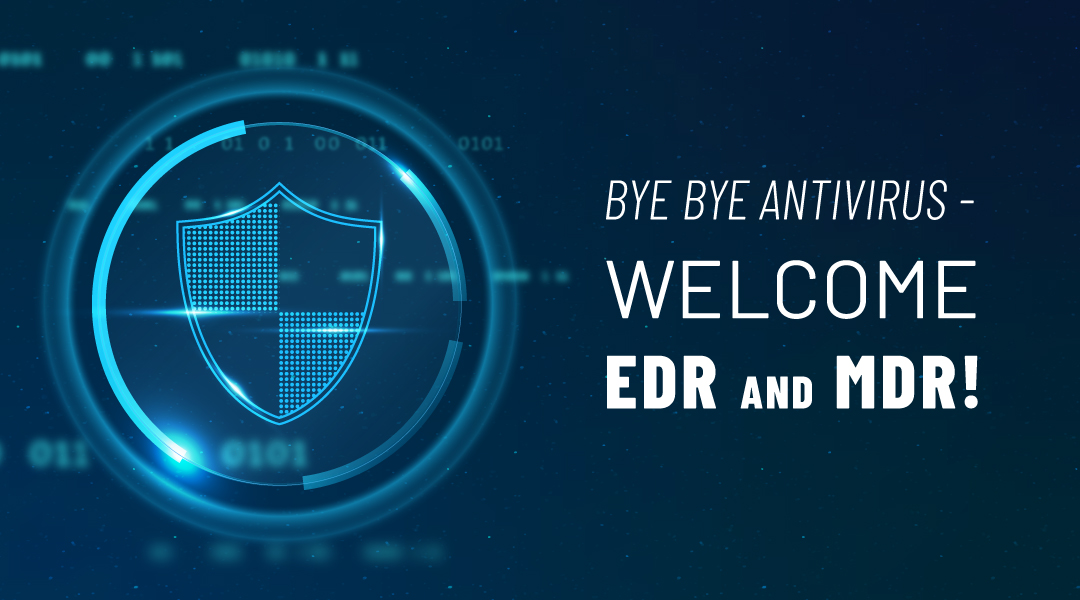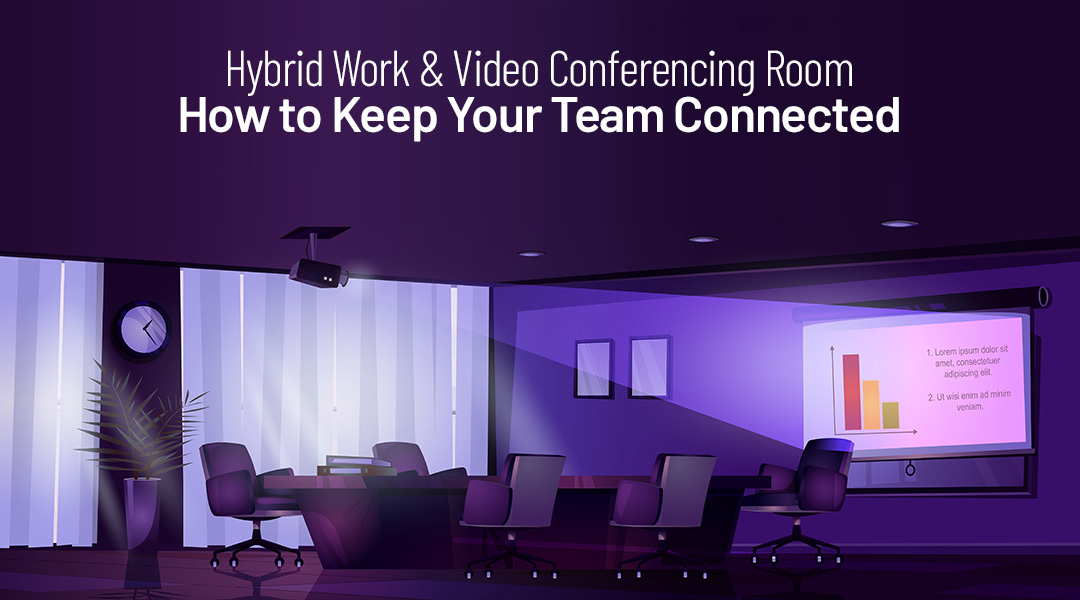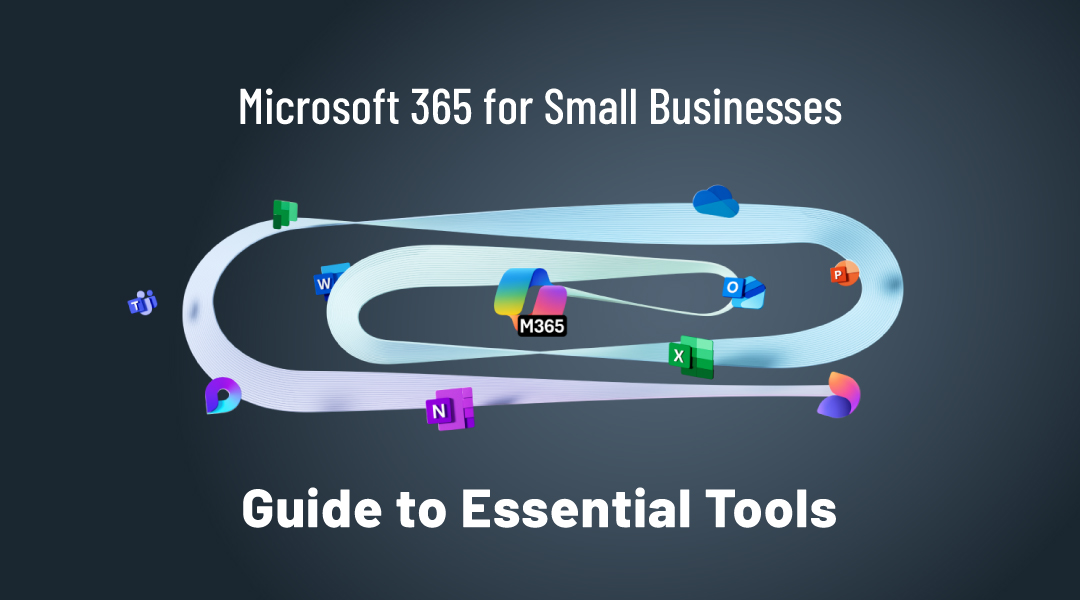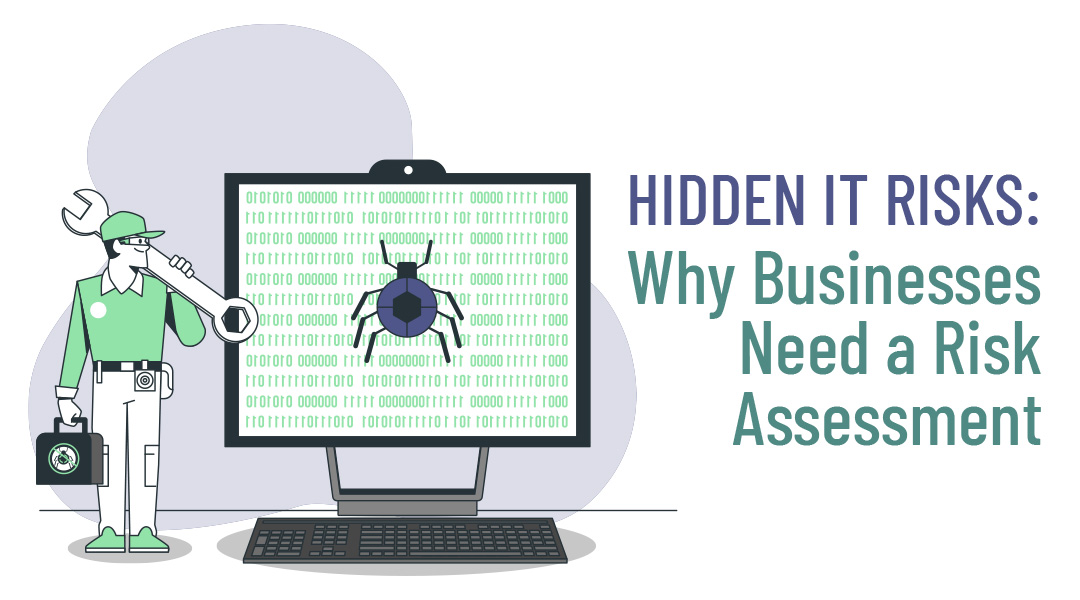Everyone is familiar with the traditional antivirus software that protected us from malware for years. Unfortunately, this is no longer sufficient today in an IT world that necessarily assumes the zero-trust principle. Endpoint Detection & Response (EDR) and Managed Detection & Response (MDR) are indispensable elements of a company’s solid security strategy.
The European NIS2 (Network and Information Systems Directive) regulations support this zero-trust concept. That’s why these guidelines aim at improving cybersecurity in various sectors in European member states. NIS2 wants to increase resilience and encourages broader implementation of security measures in different sectors.
Introduction to EDR and MDR
Endpoint Detection & Response (EDR) and Managed Detection & Response (MDR) play a crucial role in meeting the heightened security standards.
What is EDR?
Endpoint Detection & Response (EDR) is an advanced tool designed to monitor endpoint devices such as desktops, laptops and servers. It will detect and respond to cyber threats. This technology replaces traditional antivirus software such as Trend Micro or Bitdefender and provides better protection.
EDR vs. Antivirus
A good homeowner does not rely solely on a locked door to protect his home from a burglar. Similarly, organizations should not rely solely on traditional antivirus software to protect their endpoints from cyber threats. While antivirus can act as a basic lock, it only keeps out known intruders.
Endpoint Detection & Response (EDR) functions as an advanced security system with motion sensors, cameras and alarms. It not only keeps known risks at bay, but actively monitors for suspicious behavior and responds in real time to potential threats, giving your organization extra protection.
Below we list the main aspects of antivirus versus EDR.
Antivirus Software:
- Designed to detect, prevent, and remove malware by scanning files against a database of known malware signatures.
- Reactive in nature, relying on signature-based detection methods.
- Provides basic remediation options like quarantine or deletion.
- Effective against common threats but can struggle with new or sophisticated attacks.
EDR Solutions:
- Real-time monitoring: continuous monitoring of endpoints to detect potential threats.
- Advanced threat detection: EDR uses behavioral analysis, anomaly detection and machine learning to identify a wide range of known and unknown threats such as zero-day exploits and advanced threat protection (ATPs).
- In-depth analysis: EDR continuously collects and analyzes data from endpoints which provides deep insight into endpoint activity and can be supportive in forensic investigations.
- Incident and response possibilities: detailed investigation, threat detection and automated responses are possible to mitigate threats in real time.
- Proactive defense: EDR systems proactively search for potential threats
- Regulatory compliance: essential for meeting security standards imposed by guidelines such as NIS2.
What is MDR?
Managed Detection & Response (MDR) builds on EDR’s capabilities and adds both a personal layer of expertise and continuous monitoring. MDR services thus combine advanced EDR technology with 24/7 follow-up by security experts who analyze and manage alerts generated by EDR tools.
This managed layer provides additional assurance because it helps differentiate between identified risks. MDR ensures that the real threats are addressed immediately.
Key aspects of MDR include:
- 24/7 monitoring: Around-the-clock surveillance by security experts.
- Alert management: Efficient handling and analysis of alerts to differentiate between true and false positives.
- Incident response: Expert assistance in managing and responding to security incidents.
- MDR allows organizations to benefit from expert guidance without needing to hire in-house specialists, thus reducing the burden on internal IT teams and providing a faster and more efficient response to incidents.
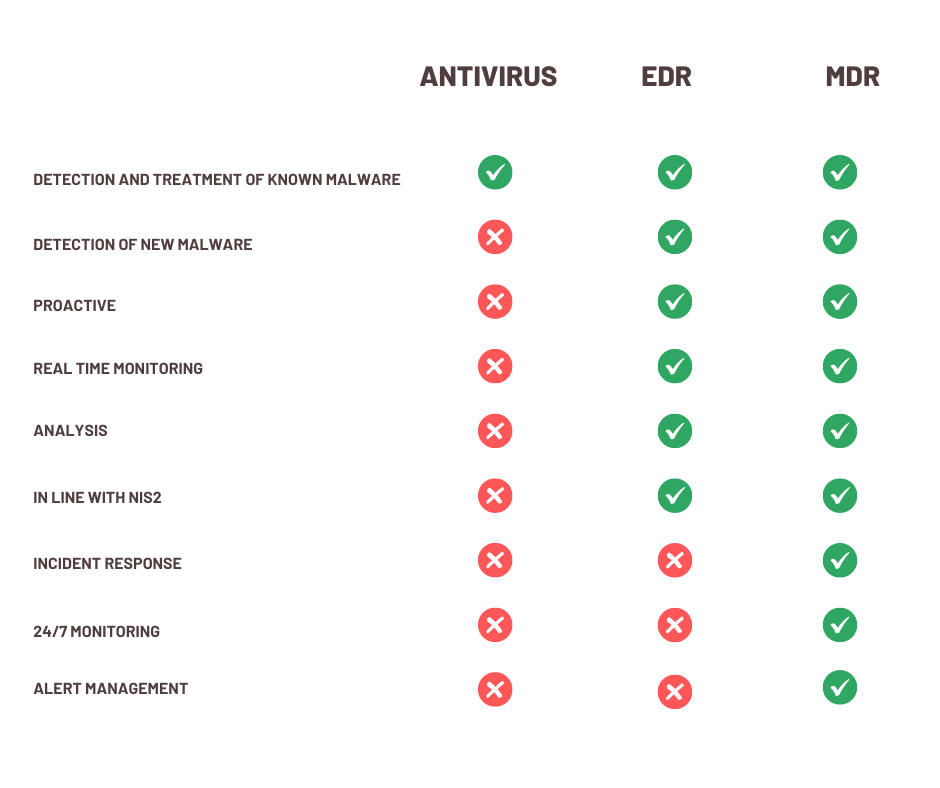
How Can ITAF Help?
ITAF is committed to providing cybersecurity solutions tailored to meet the unique needs of each client. With our expertise in EDR and MDR technologies, we offer services that ensure protection against modern cyber threats. Our team of experienced professionals will:
- Evaluate Your Needs: Conduct a thorough assessment of your current security posture to determine the best EDR solution for your organization.
- Implement and Configure: Deploy and configure EDR across all relevant endpoints, ensuring optimal performance and protection.
- Provide Training: Offer training sessions for your IT staff to help them effectively manage and utilize EDR tools.
- Managed Detection and Response Services
- For organizations seeking an additional layer of protection, ITAF’s MDR services offer:
- 24/7 Monitoring: Continuous surveillance by our Security Operations Center (SOC) analysts who are experts in threat detection and response.
- Incident Response: Rapid response to security incidents, including containment, eradication, and recovery actions.
- Alert Management: Efficient handling of alerts to minimize false positives and ensure real threats are addressed promptly.
- Regulatory Compliance: Assistance in meeting regulatory requirements such as NIS2, ensuring your organization stays compliant with cybersecurity mandates.
Book a free call with our security specialist and enhance your cybersecurity posture.

